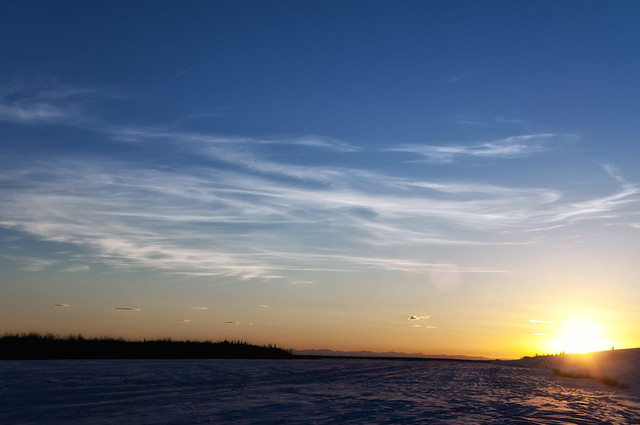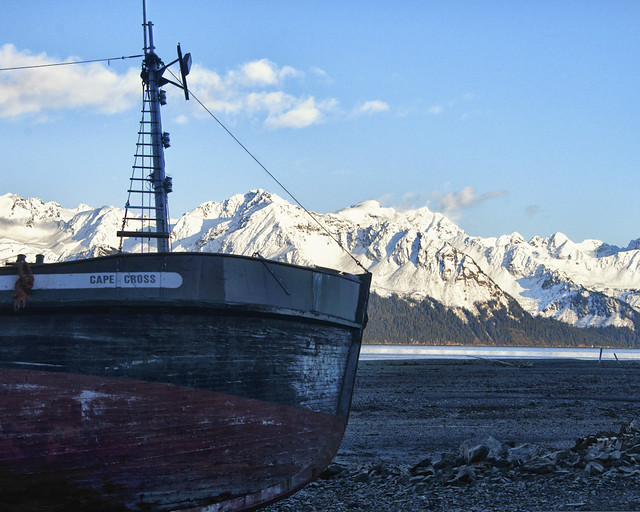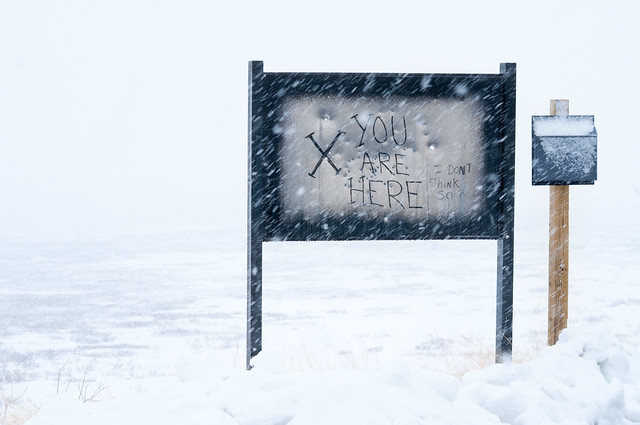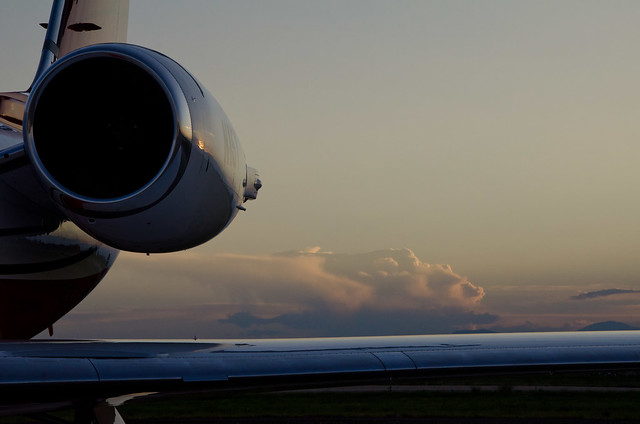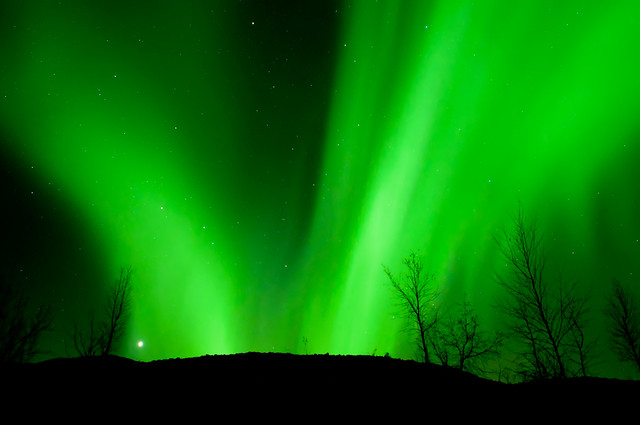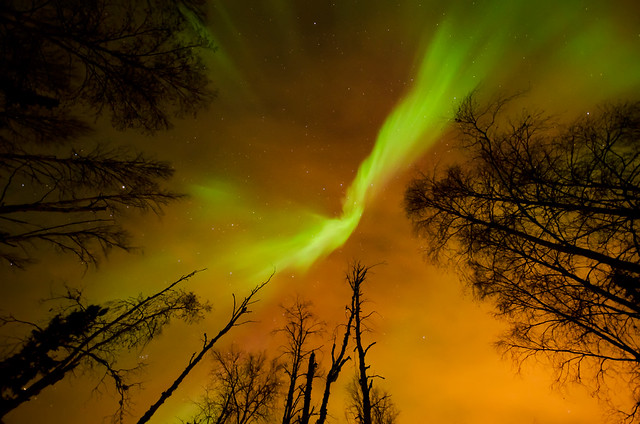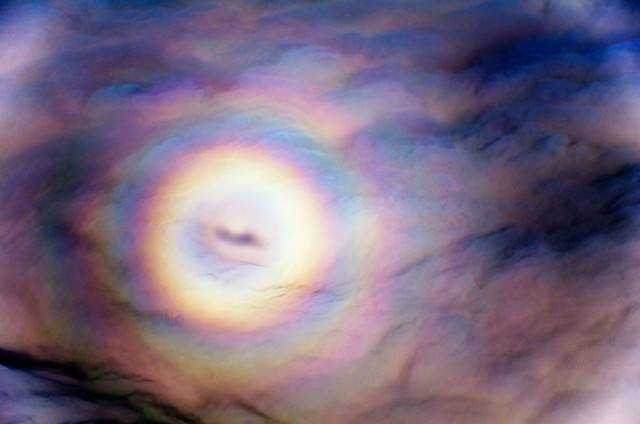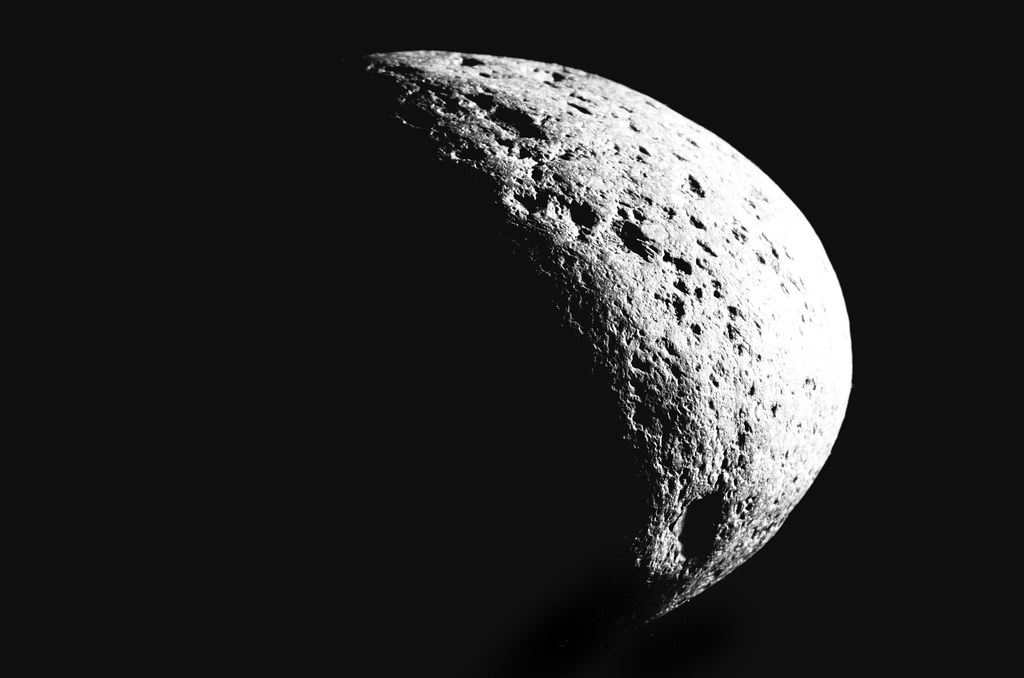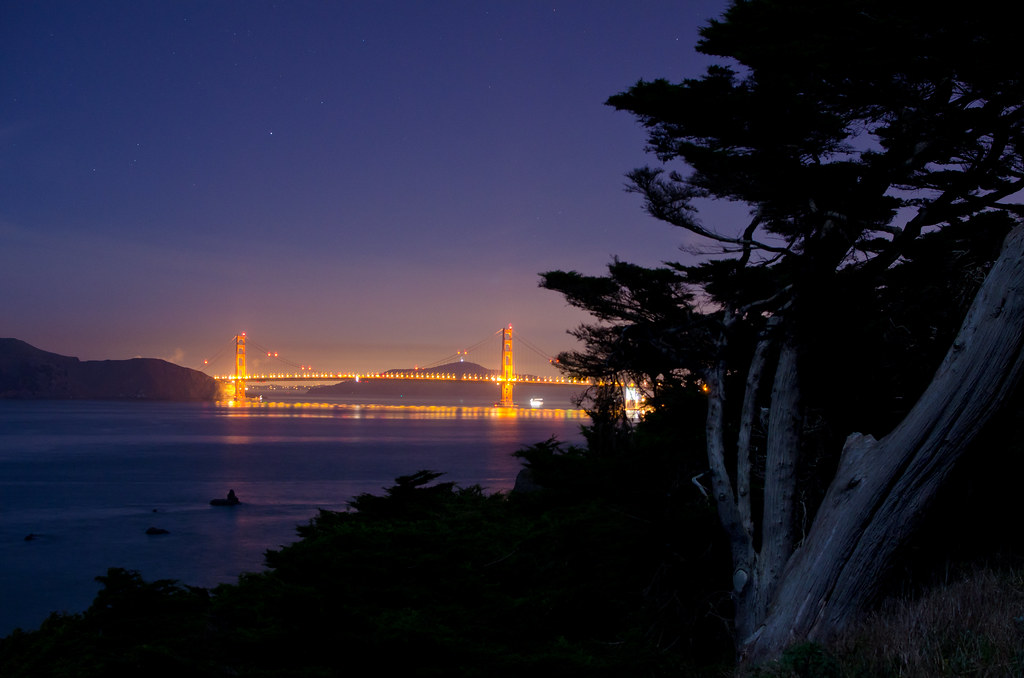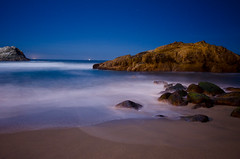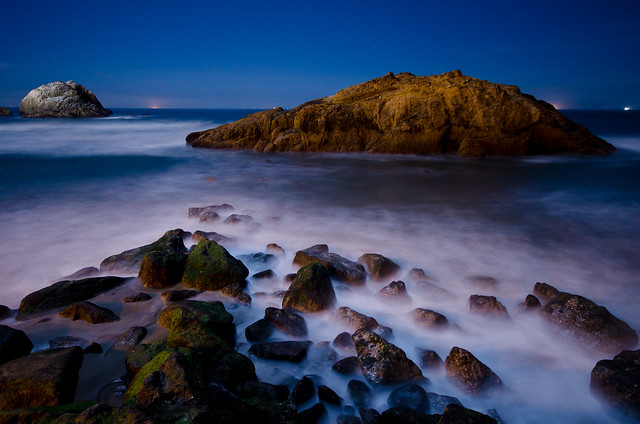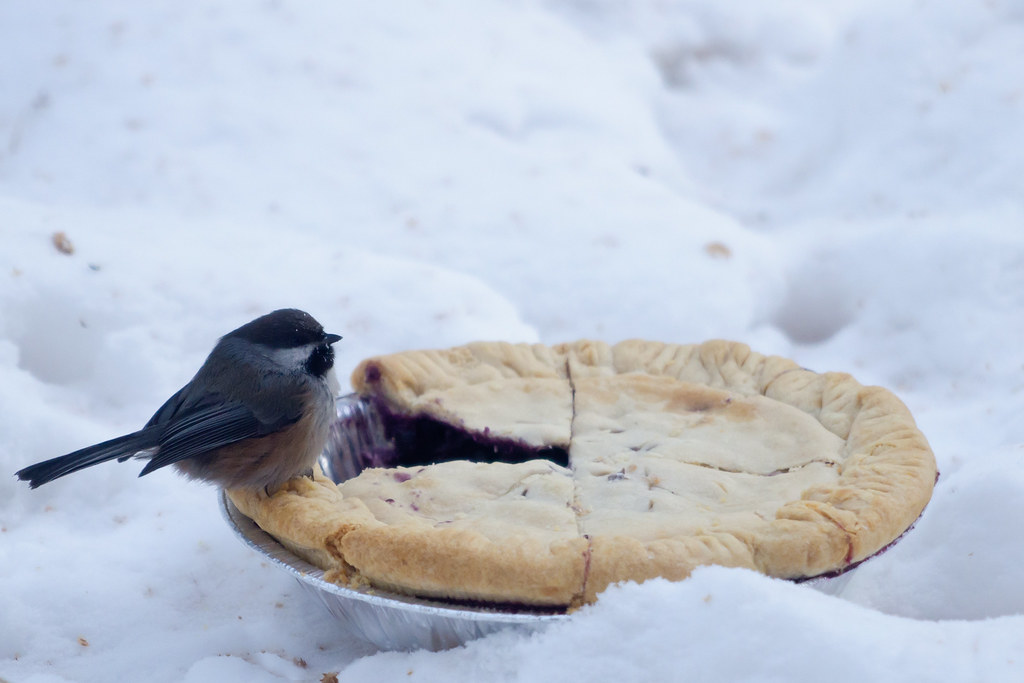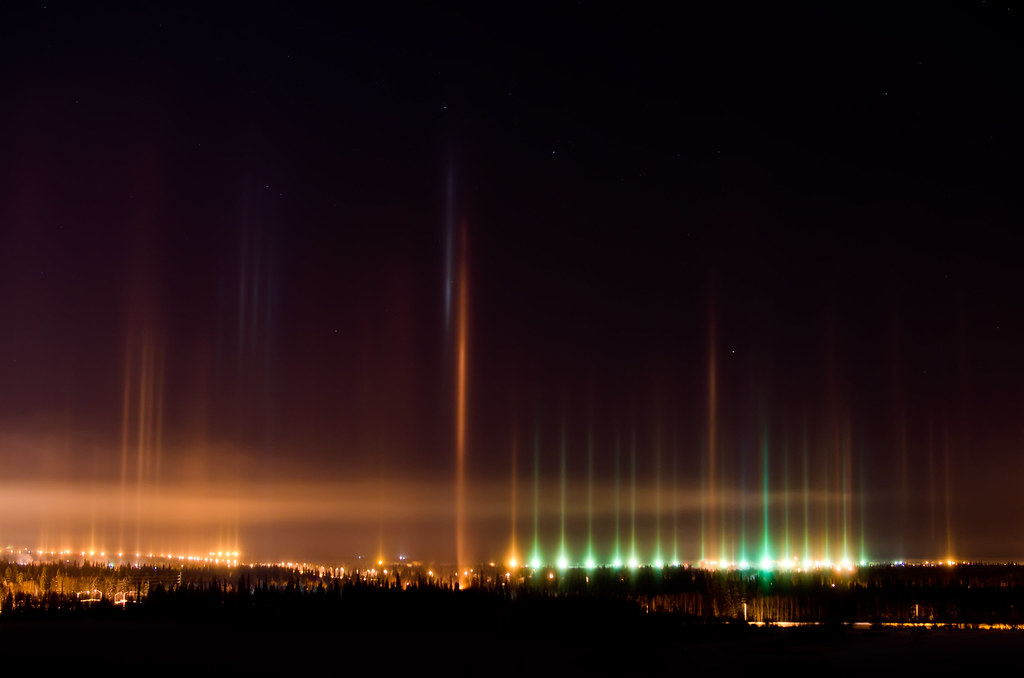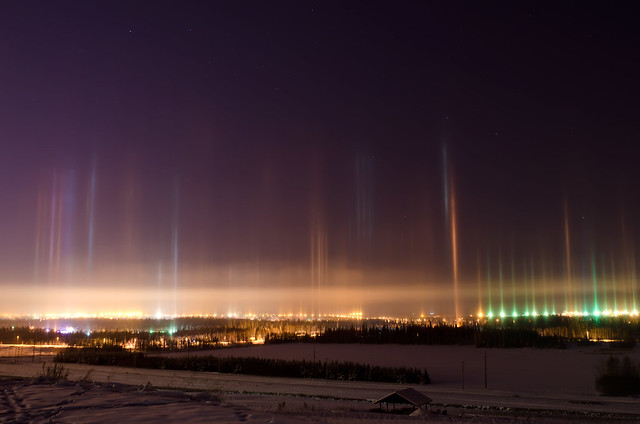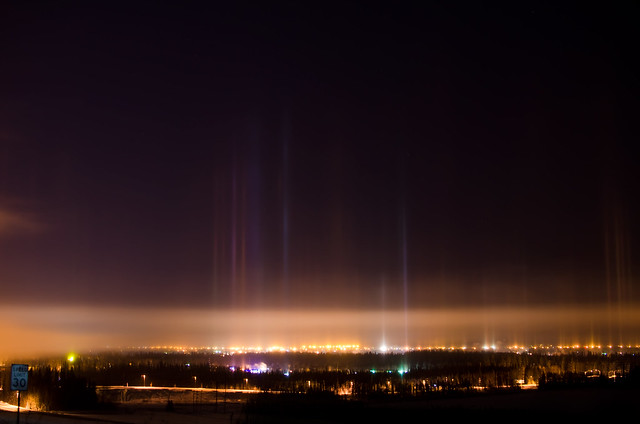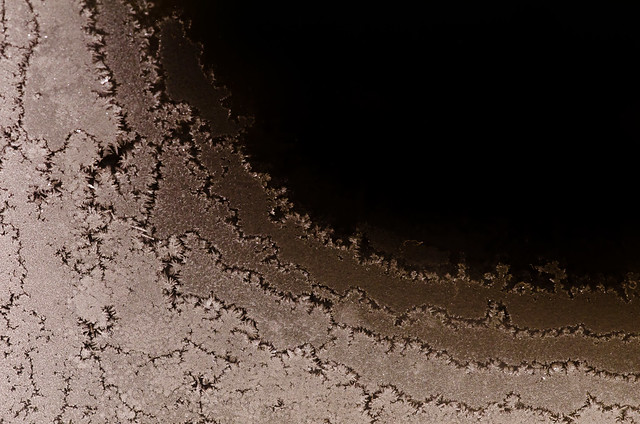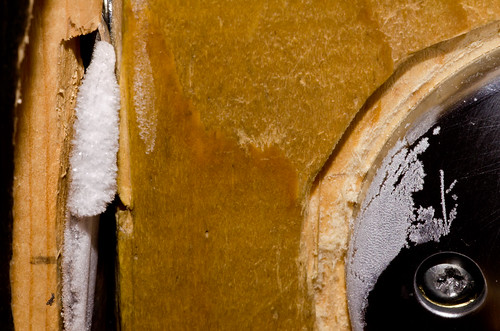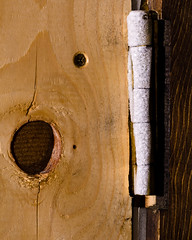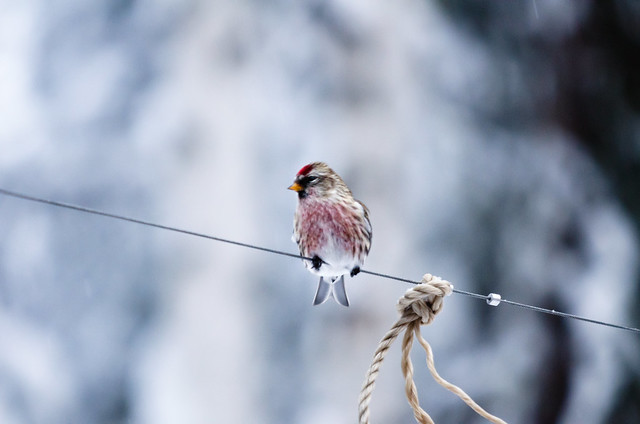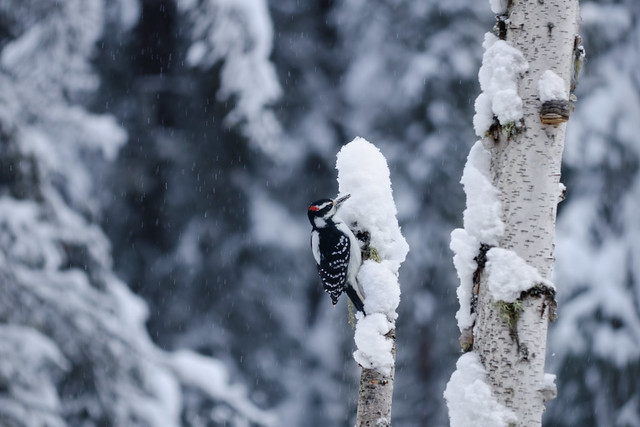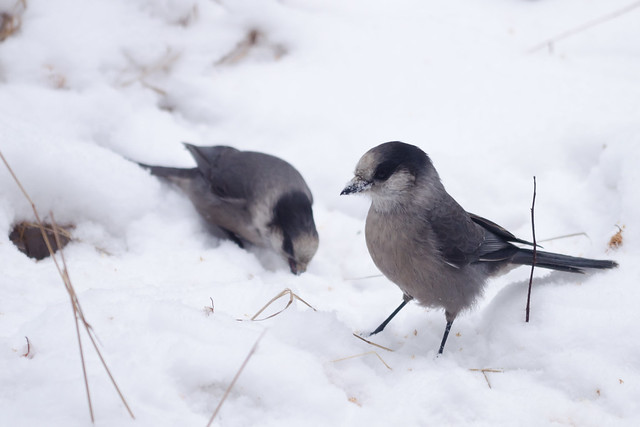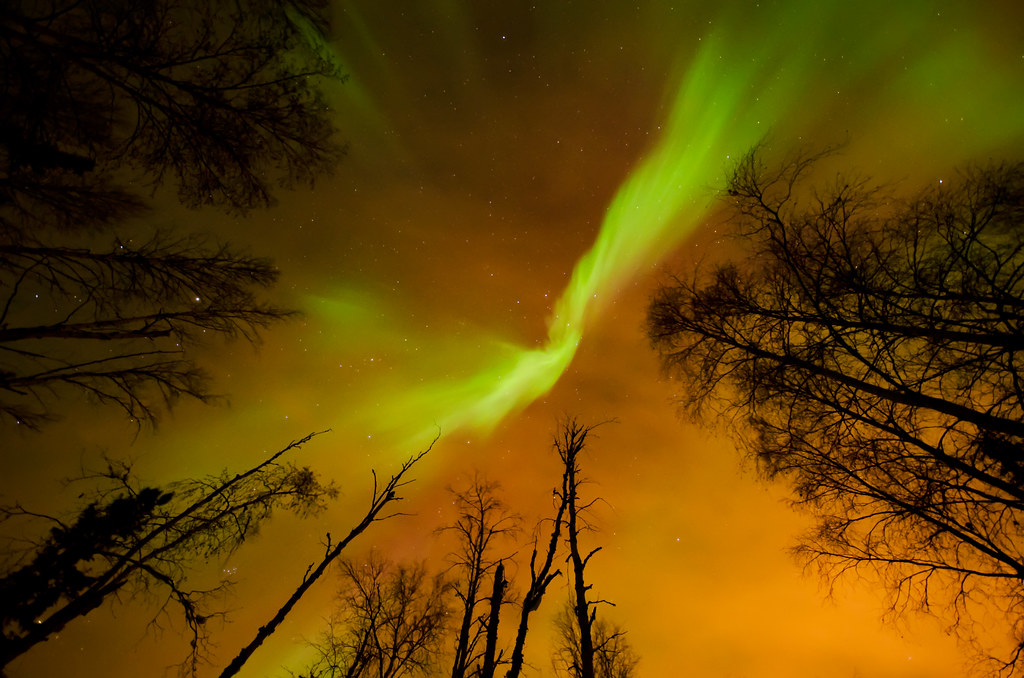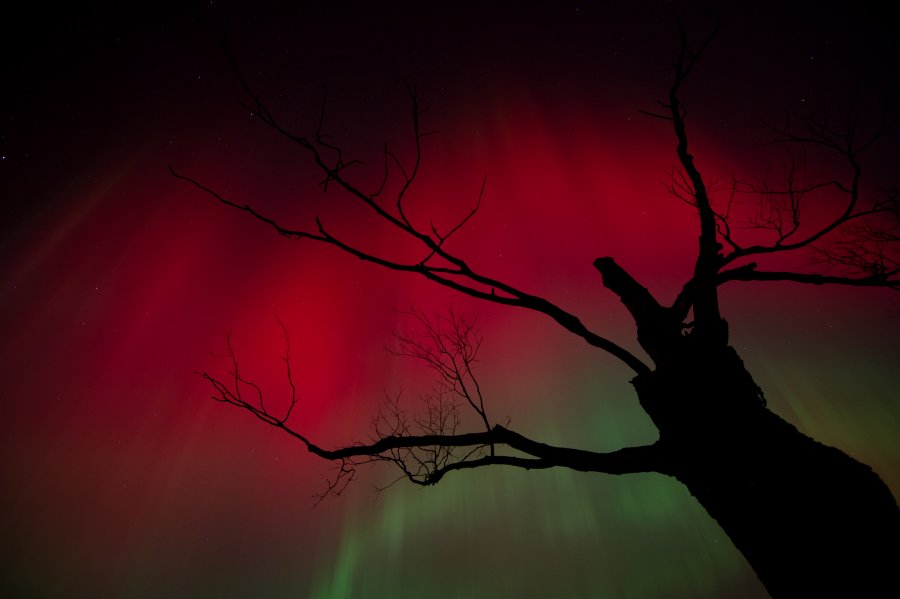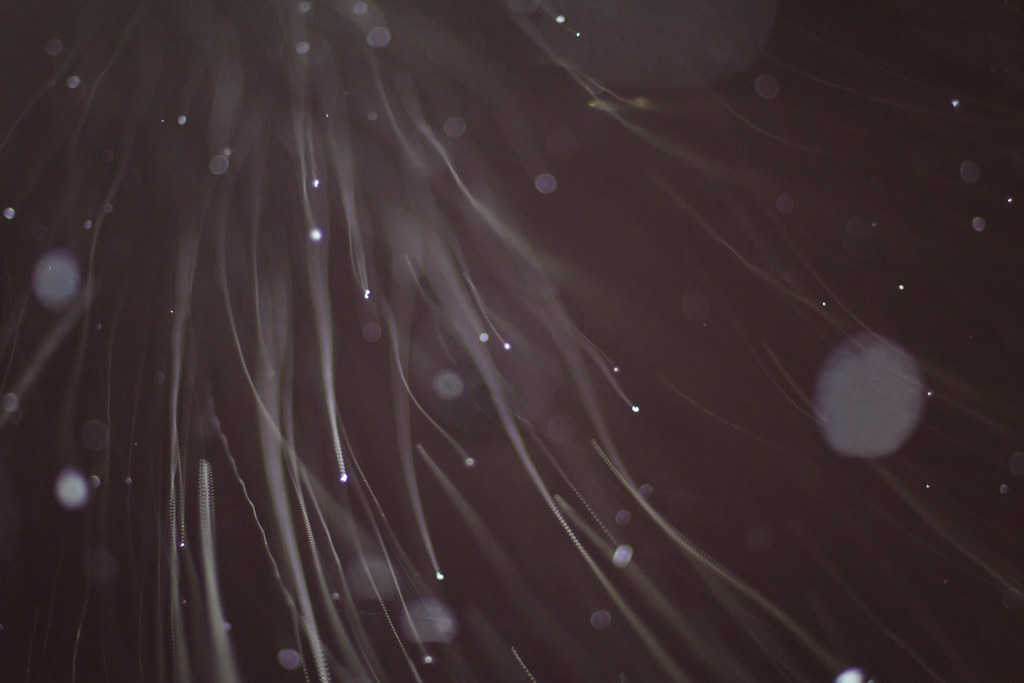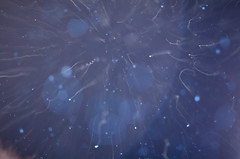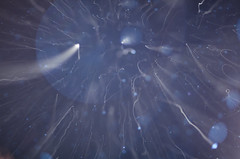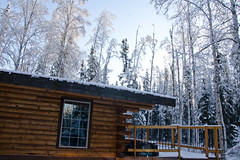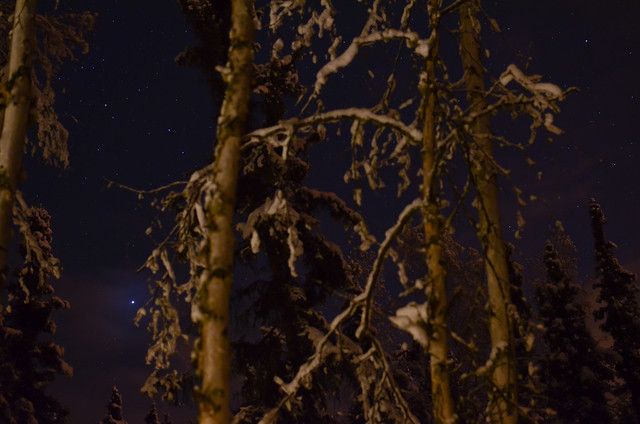January: Cold and dark, as January tends to be in interior Alaska. The Sun is almost invariably pretty when it's up. A 3-in-the-afternoon visit to Chena Lakes yielded this shot.
February: Snowy! It snowed a lot in February. Compounded with the rest of the snow that had been piling up since October, my front porch was getting pretty deep.
March: The return of daylight! I drove down to Seward for the heck of it, saw this beached boat. The Sun reflecting off the snowy mountains was blindingly bright next to the shaded black paint, so I did this one as an HDR. I need to spend some more time in this area, it looks like a great place for sea kayaking.
April: Denali in the springtime. For a few weeks before buses begin running, the park road is open to private vehicles as far as the Teklanika River (mile 30). Lee, Kate and I went on the first open weekend, drove as far as we could, then walked further. It's still the furthest I've been into the park. The cold days give clear views of the big mountain that are rarely seen in summer when all the people are here.
May: The weekend before I drove south to Arkansas I went for one last Alaska drive, down to the Denali Highway. It was not yet officially open for traffic, with lots of crazy warning signs suggesting instant death for anyone foolish enough to set foot tire on the road, but I found the road easily passable as far as Tangle Lakes. Saw lots of ptarmigan here, but my favorite shot had to be this one. Captures the feeling of the place perfectly.
June: I spent around an hour chasing one particularly large dragonfly around a field to try and get a good in-flight shot. Dragonflies are fast, and getting it in focus was difficult. The effort paid off; the dragonfly is sharp, the light is good, the exposure is just right, and the out of focus background looks great. I didn't even have to crop it.
July: I stayed in Denver for two weeks where I spent the nights doing science in a private jet over thunderstorms. Look for me in NHK's 'Cosmic Shore' program, coming out on Discovery or National Geographic channel this spring :P I would post one of the sprite images I took with the high-speed camera, but they're all on my hard drive in Alaska, so how about a shot of the plane I flew in instead? Not the best picture I took this month, but probably has the best memories associated with it.
August: Driving along the south side of Denali I pull over to a decent view of the mountain, and a couple on vacation in Alaska pull in to see the view, then tell me 'the view was better a few miles back, we're going back.' So I follow them, and they were right, it's the best view of Denali I've ever seen. First you think 'oh, those are some big mountains'. Then you notice the shadow of the big mountain behind them. I ended up chatting with them for half an hour in the grass on the side of the Parks Highway, then we go our separate ways.
September: Aurora season is on! Having recently visited the Chatanika Dredge for the first time, I know I want it as a foreground for some aurora shots, so I head that way one night when the aurora forecast looks good. It ends up being the most memorable aurora I've yet seen, and I shoot for hours - two other guys with the same idea show up to shoot too, I wish I could see what they ended up getting. This picture doesn't even use the dredge, but looks up one of the tailing piles where the aurora appears to be streaming right out of the ground. The bright thing near the ground is the rising planet Jupiter.
October: Prime aurora season! Taken from my front porch during a brief break through an otherwise completely overcast sky, this shot currently has almost 20,000 views on Flickr, making it the most popular picture I've ever taken by a good margin.
November: This year I started experimenting with time lapse videos, and by the end of the year I was shooting quite a few of them. This one was taken from the roof of the Science Operations Center at Poker Flat, using an 8mm fisheye lens meant for all-sky cameras.
December: New Year's Eve Eve, driving through the bottoms in Paris, AR looking for something interesting, I spot a Great Horned Owl through the trees. I get a decent silhouette shot from a distance, then tramp off through the woods to try and get closer. The owl is too quick for me, but the sunset ends up being nice and colorful and interesting all on its own. Here, with some random agricultural equipment.
